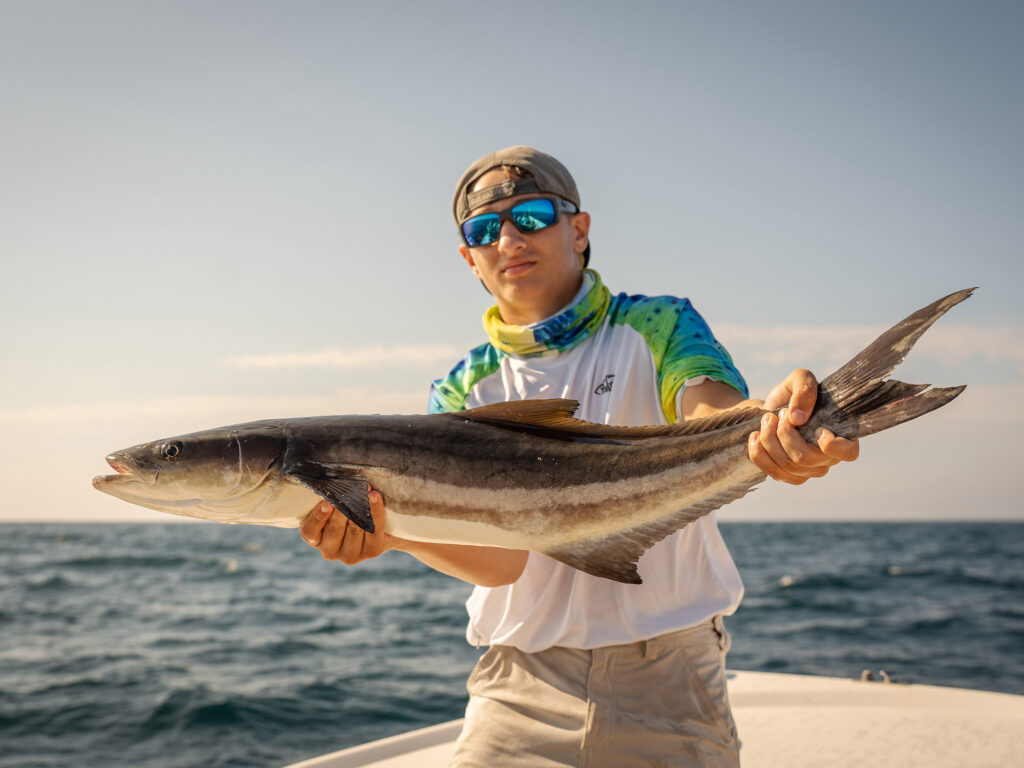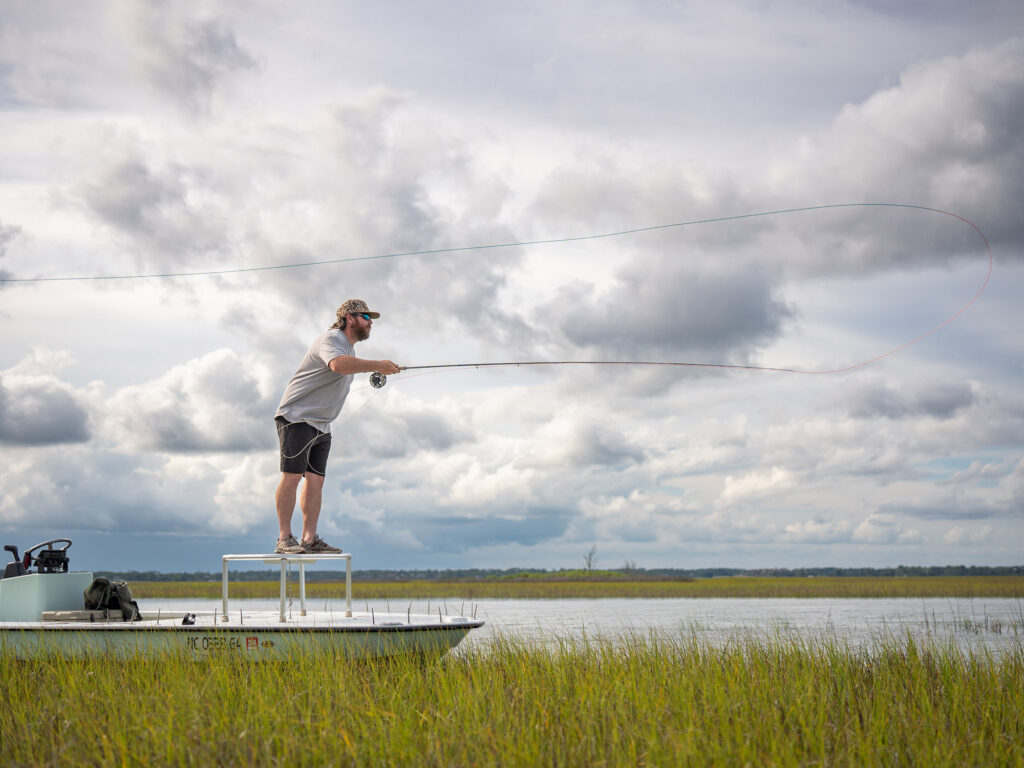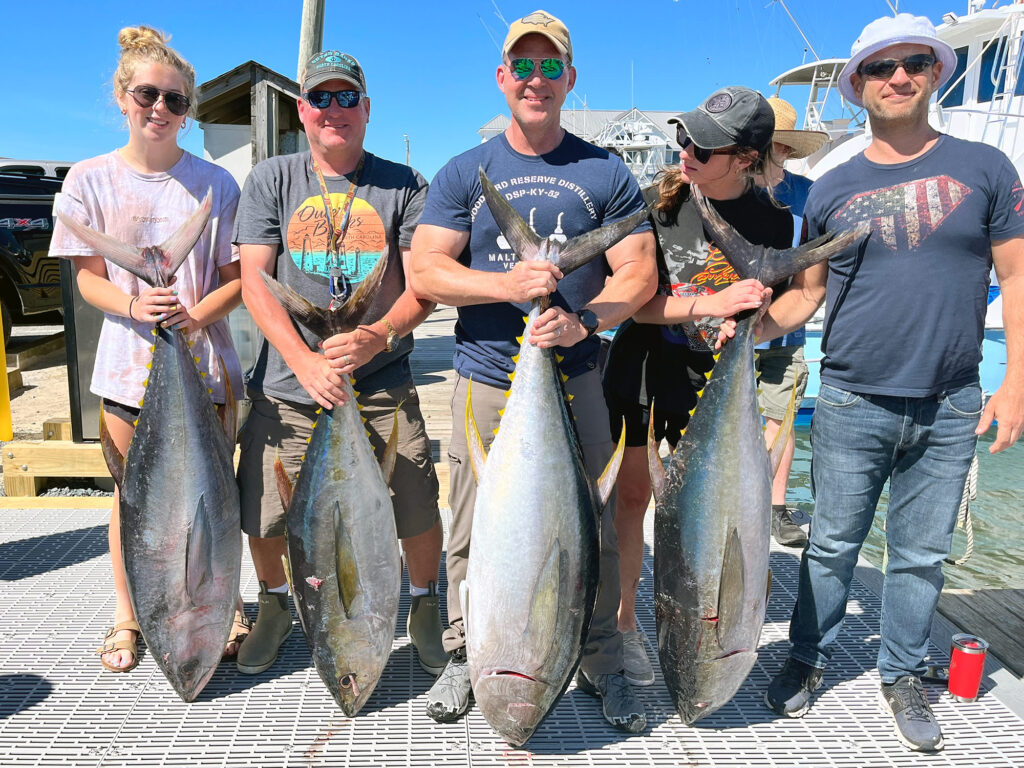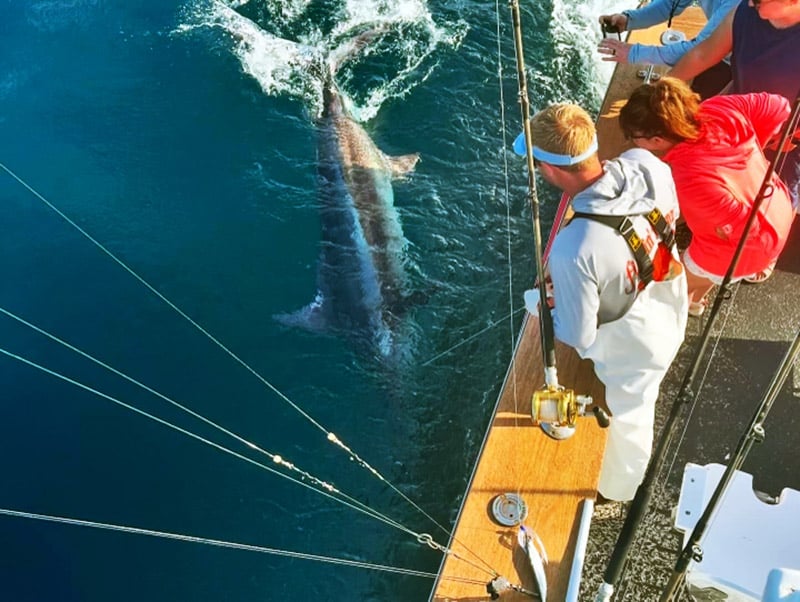
Fair warning to first-time visitors: These North Carolina places can change you. Sell your house, pack up and move kind of change. If you visit, you might never want to leave.
Cobia Fishing Along the Crystal Coast
Swansboro, N.C. guide Capt. John Mauser says that cobia showed up along his home waters of the Crystal Coast this spring, after going missing for years.
“We’ve had a fantastic cobia season this spring, the first time in a while. Fifteen years ago, we had an incredible fishery, but the cobia stopped showing up. Whether they were staying offshore, or staying deep and running fast, we didn’t see them. This year they’re back, big time. It started in May with fish of all sizes and big 50-, 60-, 70-pound fish. Maybe it’s a cyclical thing.”
After the cobia bite winds down sometime in June or July, Mauser will spend most of his summer on his skiff guiding for redfish on spin or fly, often poling across shallows, some days on flood tides in the grass. On other days, when the weather or the bite’s right, he’ll fish the inlets and beach fronts for Spanish mackerel, and bluefish, among other fish, or run 10 to 20 miles offshore in his center console for amberjack or other species at nearby wrecks. The Crystal Coast options are immense.
Inshore Redfish and Seatrout Fishing in North Carolina

“The only land developed along the Crystal Coast is about a 25-mile stretch. Everything else is natural,” says Mauser. “When you’re poling the marsh on the backside of the barrier islands, it could be like you’re a million miles away from civilization. On the beachfront, there’s no replenishment and the dunes are shifting as they should. It looks like it did when the Spanish ships sailed down our coastline centuries ago. It’s all pretty special.”
Mauser fishes that vast marsh area between the Intracoastal and the barrier islands with its maze of small, medium and large bays and creek systems lined with spartina grass and oysters, mud and sand bottom and submerged aquatic vegetation. On the mainland side of the Intracoastal, brackish creeks flow past live oaks and pine trees, with oysters and grasses along the banks. Fishing those creeks, an angler might be casting to a redfish next to a cornfield.
“It’s quite a variety of habitat, and I’m always balancing efforts between trying to outthink the fish and sharing the beauty of the place with anglers on my boat,” Mauser says. More good news — the water quality in his region is good, even improving. Mauser sees plenty of big seatrout in that healthy habitat.
“I’m only seeing more and more growth of submerged aquatic vegetation in new places in the spring and new places entirely. Where there was bare bottom, now we have eelgrass and shoal grass, and spartina where it wasn’t years before, all of which is very important for the resources and water quality.”
Offshore Fishing out of Oregon Inlet

Out of Nag’s Head and the Oregon Inlet, Capt. Greg Mayer runs his 53-foot Billy Holton Custom Carolina Sportfish, Fishin’ Frenzy, at 25 knots on their usual summertime run 30 to 50 miles offshore for yellowfin, bigeye, wahoo, dolphin and marlin.
“It all depends on water conditions what fish we get into,” says Capt. Mayer. “One day we’ll go out and get a limit of dolphin and the next day go out and catch five bigeyes. In early June, we’ve been getting eight to a dozen yellowfins a day. The Gulf Stream affects our fishing big time. In the middle of summer, sometimes we can find dolphin and tuna and even some marlin inside of 25 miles.”
Mayer targets bluewater features like ledges, turns, and dropoffs associated with the 100-fathom curve — the edge of the continental shelf. The one place most people know of is the Point.
“A lot of the days we’ll start at the Point, look at conditions and based on that, we’ll make our moves, depending on what the Gulf Stream is doing. I’ve got Starlink on the boat, so I get immediate updates on sea surface charts and weather apps.”
The Biggest Tech Development in Offshore Fishing
The greatest change he’s seen in his offshore fishing in recent years has been the introduction of omni-directional sonars.
“They’ve changed the game,” he says, with a laugh. “I’ve had one now for three years. I have the SY-50 from Simrad. This year, ten boats in the fleet installed them. Some of the best fishermen in the world fish out of Oregon Inlet, and now that they can see the fish 1,000 feet away, it’s made the best fishermen even better than they were.
“These sonar units aren’t putting any more power in the water than a transducer. The difference is now anytime a school of fish gets within 1,000 feet of a boat, there are 10 boats turning on them. So no matter what the fish do, they’re continuously being pursued. The more pressure on them, the tougher it is to get a bite.”
As if to demonstrate what the sonar can do, while Capt. Greg and I were texting about this story and he was offshore, he sent me an image from his sonar showing bigeye tuna near his boat. How this sonar technology develops will amaze us in the coming years.
Summertime Billfish Fishing

“The variety of fish that we have within 35 miles of the Oregon Inlet isn’t available many other places. At times, we have some of the best billfishing in the world,” Capt. Greg says. “In past years, we’ve had days later in the summer where the fleet would catch 300 to 400 white marlin in a day, with boats getting 15 to 20 shots. There are not many places in the world where that happens. Last year, blue marlin fishing was great and sailfishing can be fantastic in late July and August.”
Take your pick, inshore, offshore, or both, because North Carolina has it all. Keep in mind, summer days end late on the Carolina coast, leaving time for last casts, sunsets at the beach, evening walks in town, and maybe even some rest for an early start the next morning.
North Carolina Charter Captains
Capt. John Mauser
- Tailing Tide Guide Service
- Location: Swansboro, North Carolina
- Phone: (910) 340-4811
Capt. Greg Mayer
- Fishing Frenzy Charters
- Location: Nags Head, North Carolina
- Phone: (252) 216-9034









